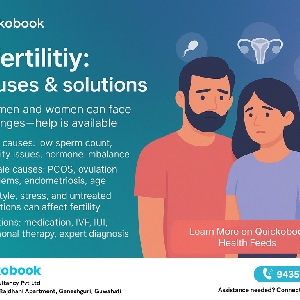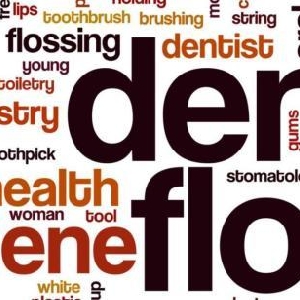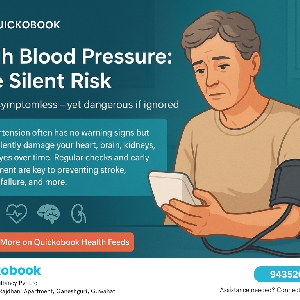Cardiologist In Agartala: A Complete Guide To Trusted Heart Specialists
Introduction Heart disease is one of the leading health concerns in India, and early care is the best way to protect your heart. If you live in Aga...
Read Full ArticleYour trusted source for health insights, wellness tips, and medical expertise
Discover our most popular and trending content

Introduction Heart disease is one of the leading health concerns in India, and early care is the best way to protect your heart. If you live in Aga...
Read Full Article
Introduction Sleep is the body’s natural reset button, yet millions of Indians struggle wit...
Read More
Introduction Mental health is just as important as physical health, yet stress and anxiety often ...
Read More
Introduction Obesity has become a rising health concern in India. Beyond its impact on heart heal...
Read More
Introduction Infertility is a growing concern among couples in India. It refers to the inability ...
Read More
Introduction: Many men silently struggle with the issue of not being able to last long in bed. If...
Read More
Masturbation is one of the most common and natural sexual activities across the world, yet it remain...
Read More
Introduction Heart disease is one of the leading health concerns in India, and early care is the ...
Read More
Introduction Finding the right cardiologist in Agartala is one of the most important decisions yo...
Read More
Introduction Obesity in children is becoming a major health concern in India. Many parents believ...
Read More
Introduction Your heart works nonstop, pumping blood and oxygen to every part of your body. But m...
Read More
Introduction Social media addiction is becoming one of the fastest-growing concerns among Indian ...
Read More
Introduction Coffee is one of the most loved drinks in India and across the world. Many people en...
Read More
Introduction In today’s digital-first world, technology is reshaping the way people access ...

We all get lazy to go to the dentist.Dont we?Here are few things you can , do at home which are as s...

Introduction High blood pressure, or hypertension, affects millions of Indians today. It is often...

People suffering withAsthma, Bronchitis, Sinusitis and Tonsillitisneeds to be extra precocious. ...

Intermittent fasting (IF) has become one of the most talked-about lifestyle choices in recent years....

When Mirabai Chanu lifted the silver medal for India at the Tokyo Olympics, the entire nation stood ...

Book appointment & health checkups;
Online lab test & consult doctor online
Get the link to download the app